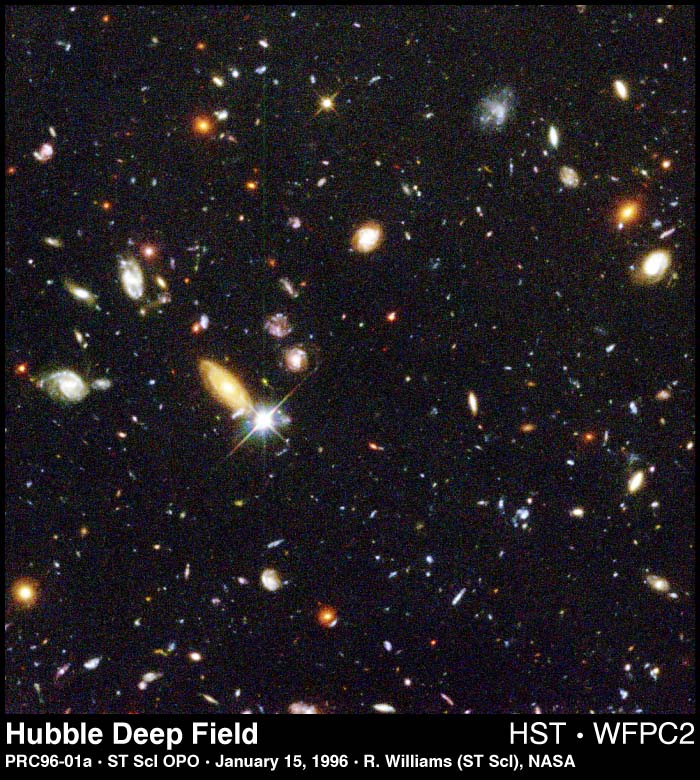

Summary
In this exercise, you will use a two-dimensional analogy to explore the expansion of the Universe.
Background and Theory
The Hubble Law tells us that our Universe is expanding. We observe galaxies, find their distances and their velocities, and find that they are all moving away from us. The more distant the galaxy, the faster it is moving away. From this information, we can estimate the age of our Universe. We assume that the Universe has always been expanding at the same rate, then we know how long distant galaxies have been travelling in order to get where they are today!
Procedure
Print out the worksheet.
- Blow up the balloon a little bit. DO NOT TIE IT SHUT!
- Draw and number ten galaxies on the balloon. Mark one of these galaxies as the reference galaxy.
- Measure the distance between the reference galaxy and each of the numbered galaxies. The easiest way to do this is to use a piece of string. Stretch it between the two points on the balloon, then measure the string. Record these data in the table. Be sure to indicate the units you are using.
- Now blow up the balloon. You can tie it shut this time if you like.
- Measure the distance between the reference galaxy and each of the numbered galaxies. Record these data in the table.
- Subtract the first measurement from the second measurement, record the difference in the data table.
- Estimate the amount of time it took you to blow up the balloon (in seconds). Divide the distance traveled (the difference) by this time to get a velocity.
- Plot the velocity versus the second measurement to get the "Hubble Law for Balloons". Don't forget to label the units on your axes!
- Fit a line to your data. "Eyeballing" it is close enough.
- Find the slope. (Remember that the slope is "the change in y over the change in x".) This is exactly the way that we find the value of H from Hubble's Law.
- Find the age of your balloon universe from this slope. How does it compare to the time it took you to blow the balloon up between measurements? What assumptions are you making by doing this? Are they sensible assumptions?
- How would your results change if you used a different reference "galaxy" on the balloon? If you are not sure, try it!
© 2007 Weber State University
Revised: 10/2007
